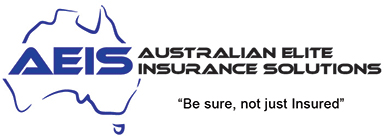As many small businesses alter their products and services during the pandemic; it is important to ensure adequate insurance coverage.
Product liability insurance can provide protection for property damage or personal injury claims arising out of the use of a business’s product, or the failure of a product.
Product liability insurance can be separate, although often it is included under public liability insurance.Michael White, Steadfast’s broker technical manager, says claims are typically split into two types.
“Personal injury claims are very common. In these cases, someone uses a product that’s defective in some way and is injured as a result. The other type of claim relates to the use of a product that fails, causing property damage,” White explains.
There are a number of circumstances that are not covered by product liability insurance. One situation is when there is an economic loss as a result of a faulty product. Product liability insurance won’t provide cover if you sell a product and it doesn’t work, resulting in a business losing money. An example would be the client sells a machine used to put caps on bottles. Let’s say the machine manufacturer claims the machine can cap 500 bottles an hour but in reality, it only caps 400 bottles an hour. The claimant suffers a loss because its production is reduced.
Typically, policies also won’t provide cover for the product itself. So if you sell a product and the product does not work and has to be replaced, the policy won’t respond.
Additionally, says White, it’s important to understand for a claim to be successful, the damage must normally take place while the insurance is in place.“Let’s say a business sells a computer to a customer.
Three years later, there’s a fault in the computer and it short circuits and starts a fire that destroys the customer’s home. The policy that usually responds is the policy that was in place when the fire started.
“If the company goes out of business in the time between selling the computer and the fire and it has no insurance in place, it won’t often be covered by the insurance policy that was in place at the time the product was sold.” If you sell a range of products but discontinue one, it’s also essential to ensure insurance remains in place for the discontinued product.
White also notes it’s important to understand that under the terms of a product liability policy, your work is your product. “So you, if you’re a tradesman and you build a bathroom renovation, the bathroom renovation is your product.
If something in the bathroom fails once you’ve finished the work – let’s say a plumber incorrectly installs a pipe that breaks and floods the house – the claim arising out of this situation will be a product liability claim, not a public liability claim.
”If you’re importing products from overseas, also ensure the product meets Australian standards to reduce the potential for a product liability claim down the track.
Product liability claims are complex and individual to the business and the products it sells. So talk to your Steadfast broker to ensure you have the right insurance in place so that in the event of a claim, you should be properly covered.
☎ (07) 3491 6532
? admin@aeispl.com.au
Important note – This article is provided by Steadfast.
The information provided here is general advice only and has been prepared without taking in account your objectives, financial situation or needs. Steadfast Group Ltd (ABN 98 073 659 677, AFSL 254928)


Recent Comments